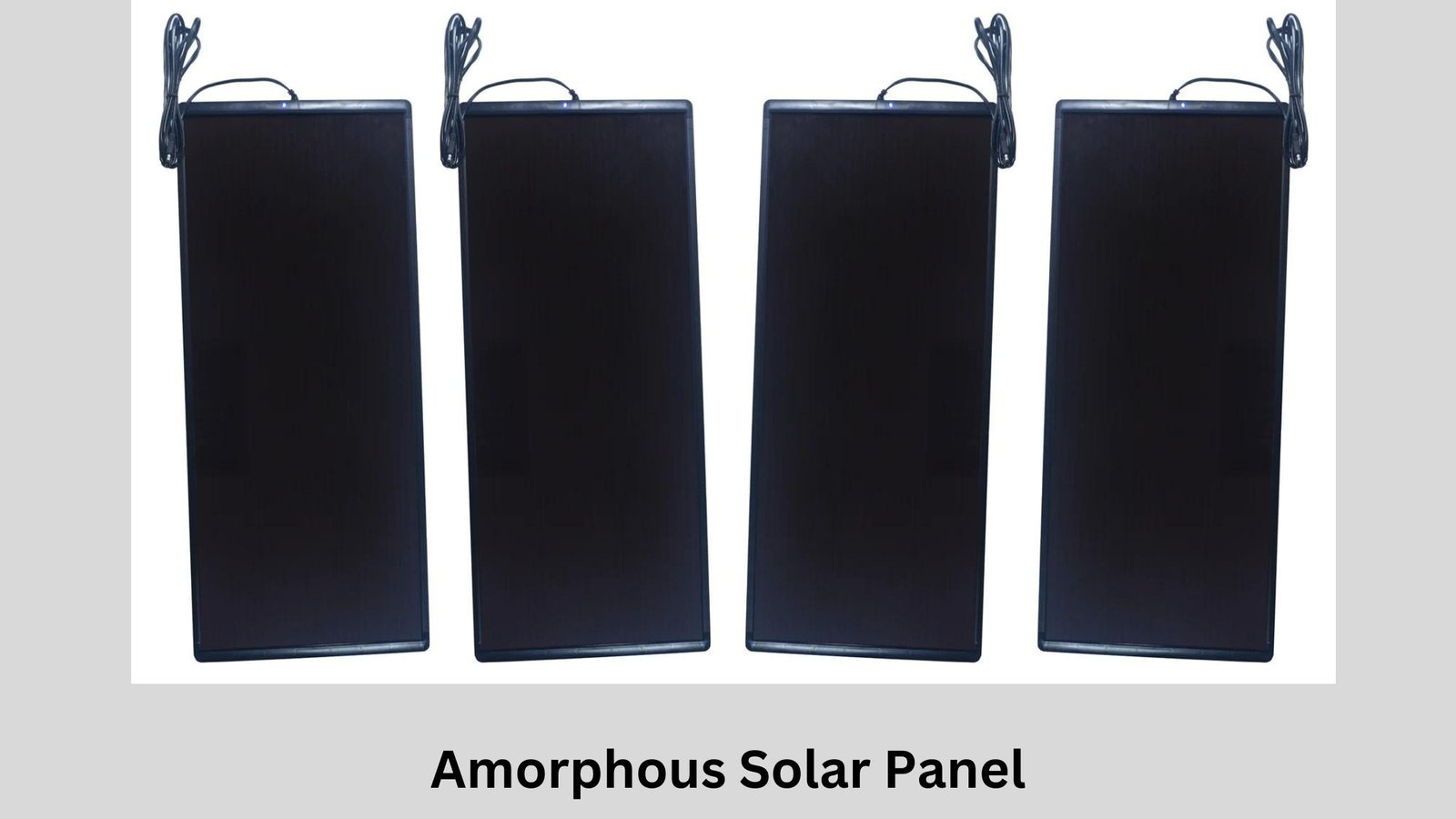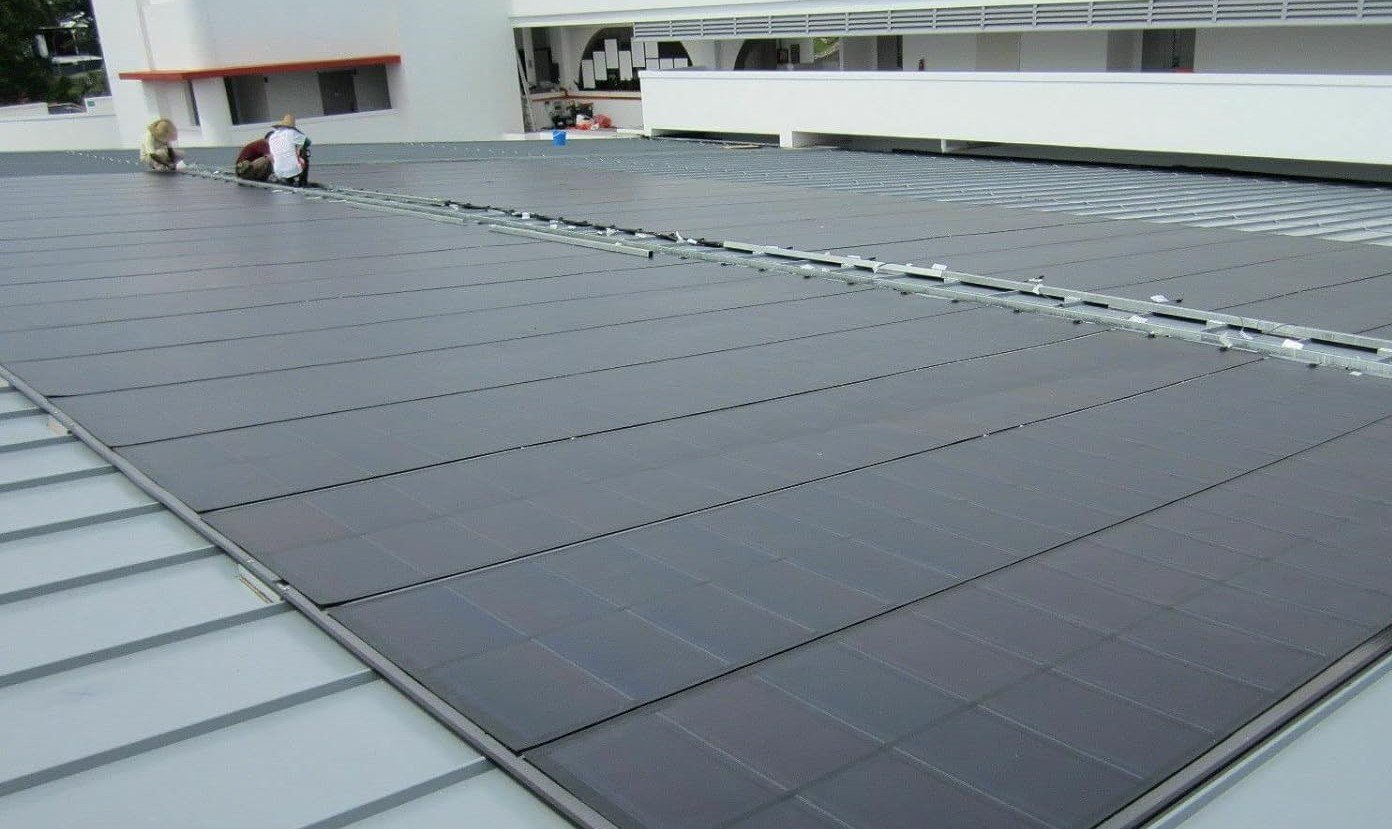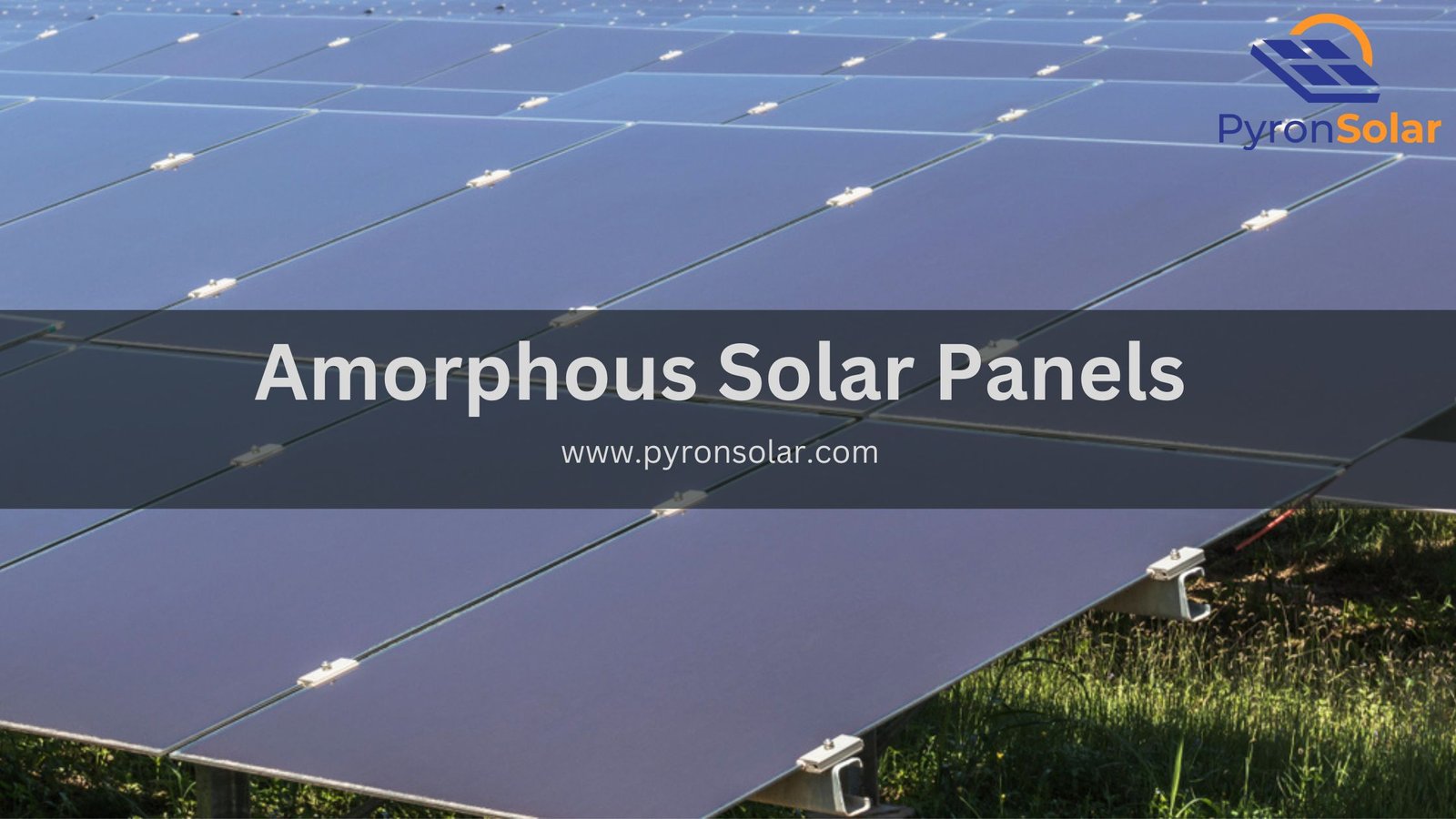Solar panels are devices that use PV cells to absorb sunlight and convert it into electricity through the photovoltaic process.
Various types of solar panels are available in the market, such as:
- Monocrystalline
- Polycrystalline
- Passivated Emitter and Rear Contact cells (PERC)
- Thin-film
- Amorphous
There is a lot more to know about different types of solar panels.
Amorphous solar panels are the developed version of thin-film solar panels that don’t utilize any crystalline silicon or other thin materials to convert sunlight into electricity. In 1973, Walter Spear and Peter LeComber in Dundee, Scotland, discovered the Amorphous silicon cells which later became widely popular. Gradually, it led to the growth of Amorphous solar panels. As research and development continue to progress, the future of Amorphous solar panels over conventional ones remains to be witnessed.
Mainly, Amorphous solar panels differ from other types in several ways such as material and construction, flexibility, weight, efficiency, and cost by having certain advantages and disadvantages. In other words, it belongs to the second-generation solar panels’ category.
It would be interesting to know how long Amorphous solar panels last by understanding their installation criteria and applications.
Understanding Amorphous Solar Panels

These are upgraded types of thin film solar panels that are lighter and cheaper to manufacture due to less use of materials compared to the normal versions. Also, the electricity-producing layers are 100 times thinner than usual silicon cells. However, their efficiency and strength are lower compared to Monocrystalline and Polycrystalline solar panels.
Advantages of Amorphous Solar Panels
The following are a few advantages associated with Amorphous solar panels that make them suitable for various applications:
1. Cost Effective: Only a small portion of silicon is used in the manufacturing process of amorphous solar cells and these materials like glass, plastic, or stainless steel are easily available at a low cost and can be effectively used as substrates. Also, these panels are cheaper per watt.
2. Flexibility: Amorphous solar panels can be installed on curved surfaces or smaller spaces due to their higher flexibility and lightweight, having the option to fold and roll as well.
3. Higher Tolerance: Compared to the crystalline versions, the Amorphous solar panels have a higher tolerance for defects and a damaged portion does not largely affect the overall power output.
4. Sustainability: These panels are less prone to cracks and require less silicon, thereby increasing their sustainability.
Amorphous solar panels perform well in low-light conditions, and it is suitable in places where there is a lack of sunlight available and the uni-solar triple junction cell absorbs a wider band of the visible light spectrum. Also, they can resist higher temperatures by ensuring a quality outcome.
Disadvantages of Amorphous Solar Panels
Although Amorphous solar panels have several benefits, they pose certain disadvantages:
1. Less Efficiency: Amorphous panels have less efficiency with just 6% to 7% and a theoretical limit of up to 15%, which is below that of an average solar panel efficiency(15% to 22%).
2. Shorter Lifespan: The average lifespan of Amorphous solar panels typically ranges between 10 and 15 years, which is shorter than the standard ones (20% to 25%) due to the degradation of amorphous solar material used in panels after a certain time.
3. Durability Issues: Due to their highly flexible nature, Amorphous solar panels are prone to issues like large wear and tear, which raises concerns over their durability. Additionally, these panels are sensitive to unfavourable weather conditions like storms, hail, and sleet.
4. Less Eco-Friendly: The disposal panels of these solar panels aren’t eco-friendly, which leads to a severe impact on the environment.
Installation and Applications of Amorphous Solar Panels

Though the installation process is easier, Amorphous solar panels require more space compared to the standard versions due to their reduced efficiency.
Aesthetically, the design is simple and less noticeable than typical solar panels, making it attractive for those people who seek elegant design and is available in round, hexagonal, square, and other complex shapes.
You can find numerous applications of Amorphous solar panels in smaller appliances such as pocket or desk calculators, watches and clothing accessories, and portable devices like e-readers and solar phone chargers. Its higher flexibility makes these panels eligible for installations in off-grid buildings, street lights and windows with transparent gradients.
Amorphous solar panels cannot be used in rooftop solar arrays in residential settings due to their lower efficiency but can be used for outdoor lighting and water heating. Also, they can be deployed in solar farms and power plants. Additionally, the lower manufacturing costs and tolerance to light make them suitable for large-scale installation in areas having high variations in weather conditions.
Amorphous vs crystalline Silicon solar panels: An interesting comparison to be known!
It would be interesting to know the brief comparison between Amorphous and Crystalline silicon solar panels based on the following factors:
| S. No | Factors | Amorphous Solar Panels | Crystalline Solar Panels |
| 1. | Efficiency | 6% to 7% and 10% (for larger areas) | Monocrystalline:15% to 23%
Polycrystalline: 13 to 16% |
| 2. | Cost | $0.50–$1.50 per watt | Monocrystalline: $1–$1.50 per watt
Polycrystalline: $0.90 to $1 per watt |
| 3. | Durability | Higher (more tolerant to physical damage) | Lower (easily prone to damage) |
| 4. | Lifespan | 10 to 15 years | 20 to 25 years |
The Future of Amorphous Solar Panels
The latest innovations and technological advancements make the future of Amorphous solar panels more promising.
Latest innovations in amorphous solar cell technology include :
Perovskite Tandem Solar Cells absorb 95% of diverse wavelengths of light. More solar spectrum is utilized when silicon and perovskites work collaboratively in tandem solar cells
Fullerene Indanones (FIDO) aims to enhance the durability of next-generation solar cells.
Thin film solar panels help in an easier manufacturing process than conventional ones.
Here are the future advancements you can expect for Amorphous panels:
- FIDO in amorphous solar cells can improve efficiency, stability, and lightweight properties.
- The Amorphous solar cells with FIDO technology might probably use perovskite-based cells that are more flexible and lighter than normal solar cells.
- Artificial Intelligence-Based Maximum PowerPoint Tracking Algorithms can be a core part of the solar-based circuits.
- Fabricating transparent solar cells helps to increase the wide range of applications.
How long do Amorphous solar panels last?
The average life span of Amorphous solar panels lasts between 10 and 15 years, which is shorter than the standard counterparts (20 to 25 years). However, few sources suggest that it can withstand only for 2 to 3 years.
You can extend the lifespan of Amorphous solar panels by following some simple tricks:
- Regular cleaning can prevent dirt and debris from accumulating on the solar panels.
- These types of portable solar panels require proper storage to protect them from extreme temperature, humidity, and physical influence.
- Purchasing premium quality solar panels can reduce the problems due to energy losses during usage.
- If you can afford the cost of regular inspections, it allows you to take timely actions as well as avoid costly repairs or component replacements in the future.
Ray is an avid reader and writer with over 25 years of experience serving various domestic and multinational private and public energy companies in the USA.

